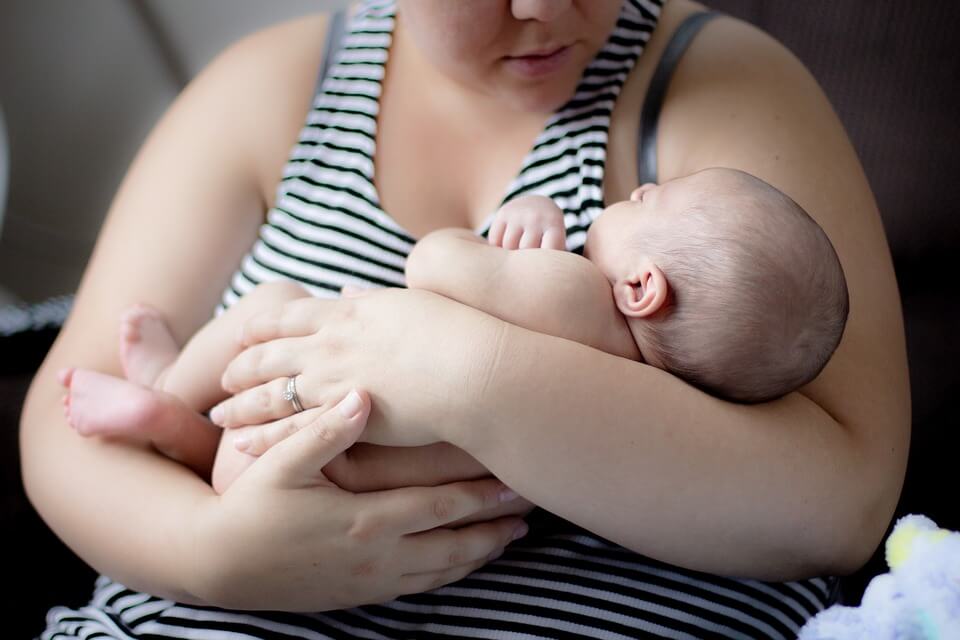Now that you and your baby no longer share a body, you might be thinking of gettingyour pre-pregnancy body back. Thoughts like “it would take only a few months to lose all thisbaby weight” might be in your head. You might even entertain the idea of doing intense workouts immediately, just so you could achieve last year’s waistline.
This mindset is dangerous, though. Your body has gone through a lot of stress. It might not be ready for an intense weightloss routine.
Instead of subjecting your body to extreme exercises, focus on a healthy fitness journey that would help you achieve your goal weight.
Is Your Body Prepared for an Intense Workout?
The most important consideration in postpartum fitness is your recovery. Jumping immediately into an intense routine might compromise your body’s ability to heal. Remember, your recovery is more important than losing baby weight. You have to be strong enough to keep up with parenthood’s demands, after all.
If you had a normal vaginal delivery, you can exercise a few days after giving birth, says the American College of Obstetricians and Gynecologists (ACOG). The US National Library of Medicine, meanwhile, sets a safe window of six weeks after delivery to beginexercising.
The case is different for a Cesarean delivery—it depends on the woman’s health, so it’s best to consult a physician. If you hear about other moms who signed up for intense classes immediately after childbirth, remember that every woman is different. What’s safe for others might be dangerous for you.
Additionally, be realistic about your goals. It may take several months — even years — for a woman to recover her pre-pregnancy body. And even then, the body might not be the same. Pregnancy changes your weight distribution and body shape, after all. The adjustments are to be expected. But all these changes are wonderful, and you don’t have to fight or reverse them.
Prioritizing Your Core and Posture
Apart from healing, you should focus on your core muscles and posture. These two are indispensable to your mobility, after all.
- Core Muscles. Have yourself checked for diastasis recti. This condition occurs when there’s a gap between the left and right abdominal wall muscles due to the stretching and thinning of the connective tissues during pregnancy.
When a woman gives birth, the tissues usually repair themselves. In some cases, however, they have stretched so much that they lose their elasticity. As a result, women still look pregnant even though they’ve given birth.
When you have this condition, it’s not advisable to do exercises like crunches, sit ups, and push ups, as these can impair the healing process. Instead, work on deep breathing exercises that stimulate your core muscles. Then, if your doctor gives a go signal, you can perform any abdominal exercise you like.
- During pregnancy, the baby pushes up on the diaphragm, preventing it from doing its job. Childbearing also decreases the strength of the pelvic floor and your glutes (the muscles in your buttocks). These three are key muscles for posture. If they don’t work properly, you’d hardly achieve balance and coordination.So, ask your physician for proper exercises for your diaphragm and pelvis.
Physical Activities for a New Mother
 On top of exercises for core muscles and posture, the ACOG recommends at least 150 minutes of aerobic activities weekly. These tasks move large muscles of the body, like the arms and legs, in a rhythmic way. Keep it to moderate-intensity levels, though. This means the movements are difficult enough to raise your heart rate and start sweating. You should be able to talk normally but you cannot sing. Examples include brisk walking and biking.
On top of exercises for core muscles and posture, the ACOG recommends at least 150 minutes of aerobic activities weekly. These tasks move large muscles of the body, like the arms and legs, in a rhythmic way. Keep it to moderate-intensity levels, though. This means the movements are difficult enough to raise your heart rate and start sweating. You should be able to talk normally but you cannot sing. Examples include brisk walking and biking.
The division of the work out is up to you. You can perform 30 minutes of exercise for five days orthree 10-minute walks each day. Just remember to spread it out. Don’t perform all 150 minutes of activity in one day!
If, however, you have performed vigorous-intensity exercises (activities where it’s hard to talk without pausing for breath) before pregnancy, you can return to the routine after the baby is born. Just secure the approval of your physician.Common vigorous-intensity exercises include running, jumping rope, and swimming.
Don’t forget to warm up and cool down, too. Allot 10 minutes to stretch the lower back, pelvis, and thighs. Then, spend 5 minutes after the workout session to bring your heart rate back to normal — walk in place or do some stretches.
Once you acclimate to physical activity, you can gradually intensify your routine. You can sign up for yoga, Pilates, and dance classes. You can also look for gyms that offer postpartum exercises.
Preparing for a Workout
Here are some tips to get you ready for a session:
- Wear proper active wear. Clothes can limit your movements and mess with your body temperature. So, choose garments that fit loosely and keep you cool.
- Breastfeed your baby before exercising. This way, you don’t have to workout with engorged breasts.
- Wear high-quality bras — those that protect and support your breasts.
- Drink water regularly. Dehydration might compromise your ability to produce milk.
The Proper Nutrition for a New Mother
 Your weight loss routine expends much energy. Healthy meals maintain your lean muscle tissue, help you produce milk, and aid your weight loss.
Your weight loss routine expends much energy. Healthy meals maintain your lean muscle tissue, help you produce milk, and aid your weight loss.
Eat plenty of fruits and vegetables — experts recommend at least five portions a day. Include plenty of fiber-rich foods in your diet, such as oats, beans, and grains. At the same time, limit processed foods, unhealthy oils, and sugar. And make sure your protein needs are met.
Don’t forget to indulge yourself every once in a while, however. A slice of chocolate cake once in a while won’t hurt!
Staying Motivated
It’s hard to stick to your routine, especially because you have enormous responsibilities as a parent. So, here are some tips to keep you motivated:
- Get a workout buddy – Time flies when you brisk walk with a work out buddy. He or she would help you be accountable for your fitness routine.
- Set realistic goals – A concrete set of goals gives you a reason to get going and guides you throughout your fitness journey. Just make sure they’re realistic, though. Spread your goal weight loss over a year.
- Reward yourself – Checked a fitness goal? Schedule a day at the spa or buy that shirt that you’ve been eyeing at the store. Celebrating your progress is healthy.
Being a mom is a great experience, but pregnancyreally takes a toll on your body. You have to embark on a healthy fitness journey to keep your body strongand ready for the challenges of motherhood.
Check our site for more articles on health and wellness.

